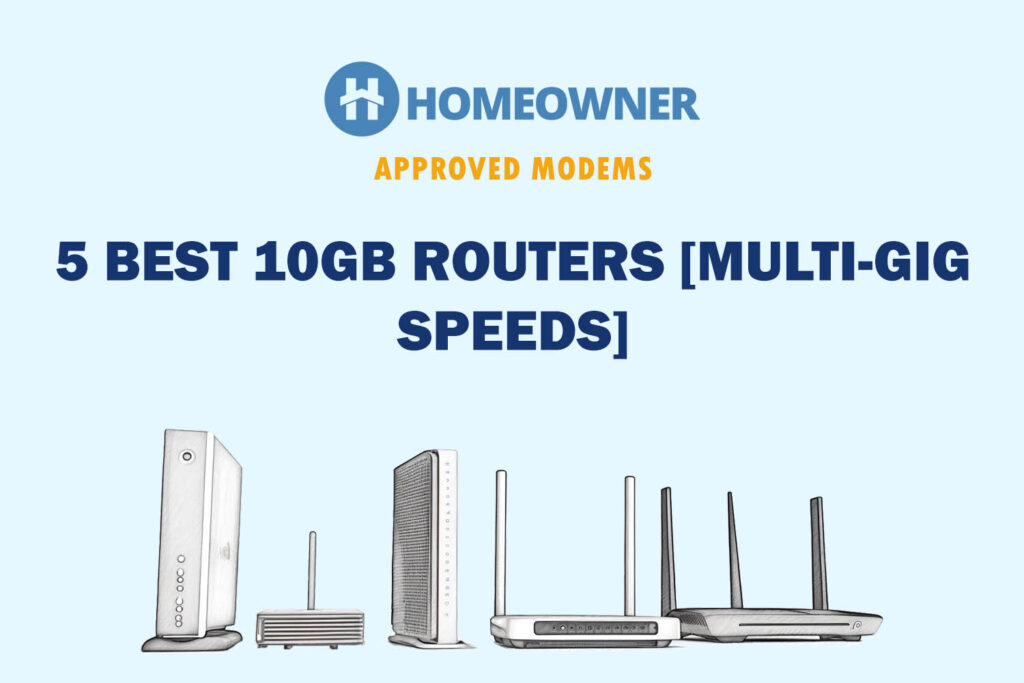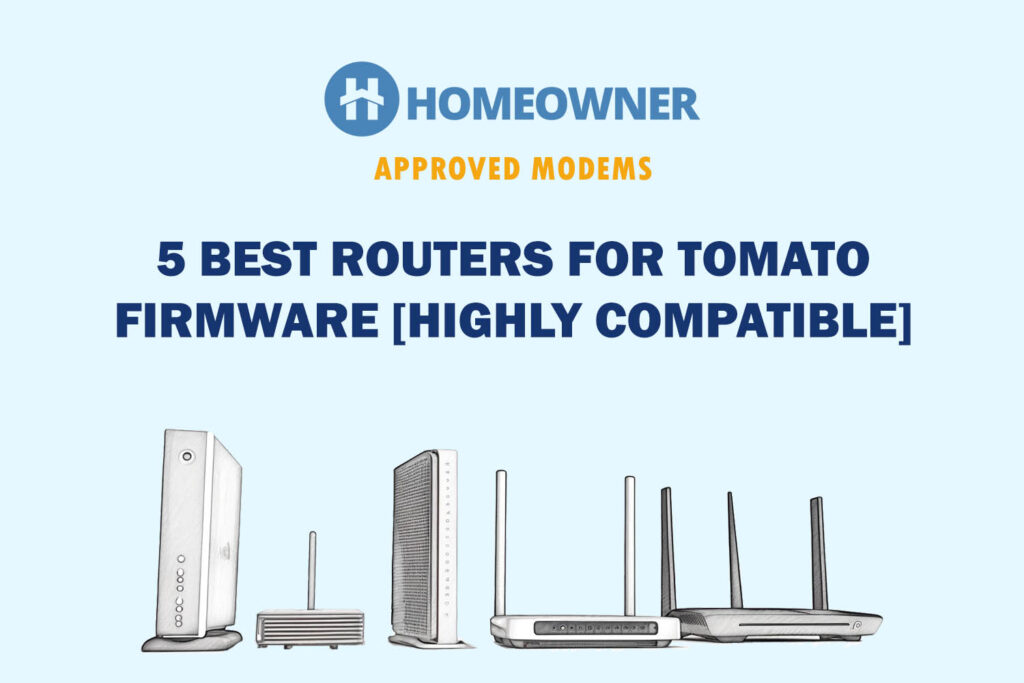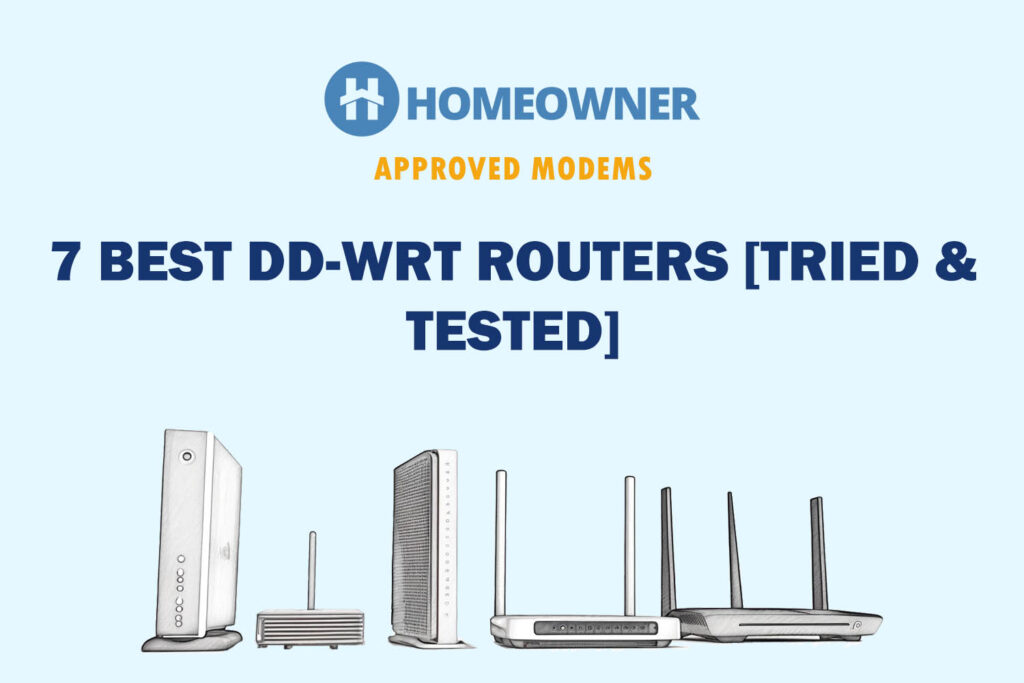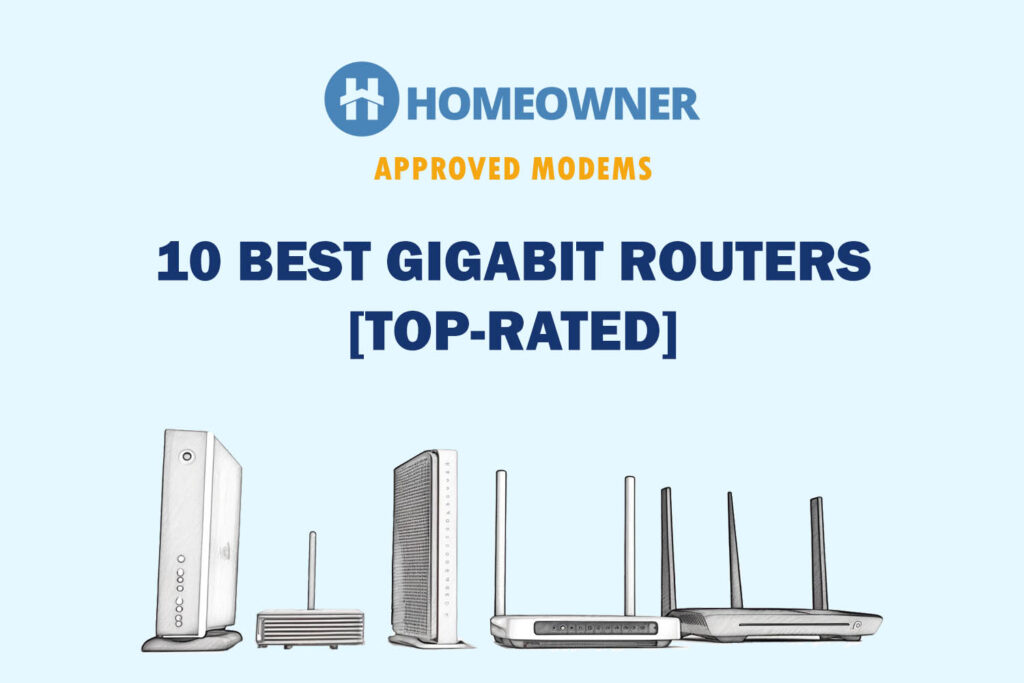Securing wireless networks is essential, and a VPN (Virtual Private Network) can help achieve that. However, if installing it on several devices seems like a hassle, a VPN router makes perfect sense.
It’s powered by firmware that lets all the connected devices browse safely. While most routers have VPN support, not all function the same. Some have it pre-installed, while others require manual installation and configuration.
To help you select the best, I got 13 different devices to evaluate their encryption capabilities, ability to unblock location-specific content, and more. I have then narrowed the list to 7 options that meet the necessary criteria.
7 Best Routers for VPN in 2025
The selection has been made considering different people with varied needs. The list starts with the high-end offering, swiftly moving on to mid-tier and ending with a budget option. Rest assured, you'll find an ideal device for your needs!
1. Best Overall: Synology RT6600ax
- Expanded 5.9 GHz spectrum support enables additional high-speed 80 and 160 MHz channels
- 2.5GbE port enables support for the fastest ISPs and can optionally be configured as a LAN port
- Create and define up to 5 separate networks to segregate and contain vulnerable devices
- Parental controls, web filtering, traffic control, and threat prevention put you in control over your network
- Comprehensive VPN server solution with remote desktop and site-to-site tunneling provides flexible and secure remote connectivity
Synology RT6600AX stands on top of my list with its state-of-the-art VPN plus tech, which lets users decide which devices connect remotely.
Its notable features include tri-band Wi-Fi 6 support, a 2.5G LAN/WAN port, multi-device handling ability, and advanced security features. These and the overall performance take it much ahead of its predecessor, Synology RT2600ac.
Why is it a suitable choice?
A Synology VPN allows you to set up a few different types of VPNs like SSL, remote desktop VPN, web VPN, web portal, and domain settings. You have the standard VPN to set up OpenVPN, L2TP, and PPTP.
Each here has a different use case. Remotely, I can display my desktop at the office directly in their browsers using a remote desktop VPN, and with a Site-to-site VPN, I can share my resources with clients sitting elsewhere securely.
Remember that some of them are more secure than others, so choose whichever you wish to enable. Besides, VPN Plus entails many powerful real-time tools to manage and monitor connections.
You can also set up which network your devices access remotely and identify any abnormal usage by monitoring the usage stats of active users.
Aside from that, Synology RT6600AX is one of the most secure WiFi routers with a firewall to prevent access for unauthorized elements and block malicious websites, strong parental controls, WPA3, guest network, and auto-firmware update.
Speeds & Performance
As with the name, RT6600AX comes at a maximum throughput capacity of 6600 Mbps, with the top speed on each band as follows:
| 5 GHz (1): 4804 Mbps | 5 GHz (2): 1200 Mbps | 2.4 GHz: 600 Mbps |
The results of my speed tests with the Optimum 2 Gbps plan turned out great. And despite turning the VPN Plus server on, the speeds weren’t altered.
With 1.78 Gbps for download and 1.3 Gbps for upload, it was the fastest of the lot.

Meanwhile, its scores of 1.18 Gbps and 1.01 Gbps at 40 feet beat them all. Besides, the wired connection over the 2.5G port delivers a top download speed of 1.89 Gbps.
All in all, RT6600AX came out great in my days-long stress test. During that time, I played online games, streamed 4K videos, filed my taxes, attended video calls, and engaged in other tasks without any artifacts or lags.
WiFi Coverage & Devices Capacity
Its coverage is on par with the 2,500 Sq Ft routers, and with my test, it’s safe to say that the RT6600AX covers a 2,200 Sq Ft area. The signal strength was also great, even in the nooks, as displayed in the WiFi analyzer app.
Moving on, the manufacturer claims a device limit of 200. Connecting more than 78 devices in my tests produced significant lags and artifacts.
Conclusion
Overall, RT6600AX is hands down the best router that hosts a handful of security features including VPN. Be it speed, range, or device handling ability, it excels at everything. Its only limitation is a premium price, but the features it packs in make it worth it. For a more in-depth look, check out the Synology RT6600AX review.
Pros
- Tri-Band + Wi-Fi 6
- Excellent throughput
- Feature-packed VPN Plus
- Multi-gig LAN/WAN
- Great wireless range
Cons
- Pricey
2. Best ExpressVPN Router: ExpressVPN Aircove
- World-class, built-in VPN: Exclusively developed by ExpressVPN, the Aircove router brings all the benefits of the #1 trusted VPN service to your whole home network (when used with an active ExpressVPN subscription, sold separately). Aircove comes with a 30-day free trial for new ExpressVPN users, no credit card required.
- Always-on protection, high-speed performance: Any device that connects to Aircove enjoys instant ExpressVPN protection 24/7, including smart home appliances that usually aren’t compatible with VPN software. And with dual-band Wi-Fi speeds of up to 1,200 Mbps (up to 600 Mbps for 2.4 GHz and up to 1,200 Mbps for 5 GHz) and 1,600 sq. ft. (150 sq. m) of whole-home coverage—everyone gets the performance they need.
- Connect to multiple VPN locations at once: Sort your devices into groups, each with its own VPN location. Watch a game in another country, do your banking locally, and even set some devices to use no VPN at all.
- Set parental controls, block ads, and protect your privacy from trackers and malicious sites. These features are always available to you, even when the VPN is not in use.
- This version of Aircove only ships to the U.S. & Canada. If you’re not in the U.S. or Canada, you can get our international version of Aircove. Both versions are functionally the same.
To get a network-wide VPN, you must get a router that has a VPN built in. Aircove is one such option by ExpressVPN. It brings Wi-Fi 6 for decent throughput and a 1,600 Sq Ft range with multiple external antennas.
Why is it a suitable choice?
The Aircove router is one of the few options that support the full-fledged functionality of ExpressVPN. So, no complicated jargon and wasting time installing apps for everything, as it can protect all WiFi-enabled devices.
To start with, it lets you connect to five servers simultaneously. For instance, I could set up my SmartTVs in a UK location to stream Netflix and other online content while switching my gaming console to Japan to get access to exclusive online games.
With this, say goodbye to annoying device limits, as many devices can be at a time. If, at any point in time, the server drops, the network is automatically cut out to safeguard your privacy and security.
Not only that, there’s WPA2/WPA3 encryption that encrypts the data traveling through the network.
Speeds & Performance
Speed-wise, it doesn’t sit alongside the top picks with an aggregated speed of 1800 Mbps. The respective speeds on each band are as follows:
| 5 GHz: 1200 Mbps | 2.4 GHz: 600 Mbps |
Such speeds make it ideal for any mid-tier plan, i.e., 600 Mbps and below. With the VPN turned on, the respective download and upload speeds at 20 feet turned out to be 519 Mbps and 29 Mbps.
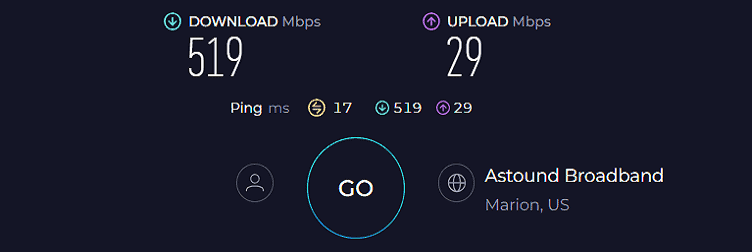
At the same time, individual speeds at 40 feet were registered at 369 Mbps and 22 Mbps.
That isn’t the fastest, but it should be enough to fulfil your streaming, video conferencing, and casual gaming needs.
WiFi Coverage & Devices Capacity
The Aircove, with its four-antenna support, claims a decent coverage of 1,600 Sq Ft. So I installed it at my grandpa’s 1,500 Sq Ft house with thick walls, and it managed to cover most of it except a few spots.
Number-wise, the overall coverage can be deemed at 1,200 Sq Ft, making it ideal for any two-bedroom apartment.
But its device-handling capacity is great, considering it can connect to up to 42 devices simultaneously, and signals were stable, courtesy of its MU-MIMO tech.
Conclusion
Aircove AX1800 is a valuable router with a pre-configured ExpressVPN to protect your home or office network. Its Wi-Fi 6 capabilities and impressive connection speeds make it an excellent choice for most users.
Besides, a pre-installed VPN eliminates manual installation, making things easy. But inferior throughput and range have pushed the router to second position.
Pros
- Wi-Fi 6 support
- Great device handling capacity
- ExpressVPN comes pre-installed
- Decent throughput capacity
- Easy to use
Cons
- Inferior throughput capacity
- Middling range
3. Best for Gaming: TP-Link Archer GX90
- Game Band: Tri-Band structure provides a 4.8 Gbps Game Band for your gaming rigs and bings pure immersion. 4804 Mbps (5GHz, HE160) + 1201 Mbps (5GHz) + 574 Mbps (2.4GHz)
- Game Accelerator: Detect and optimize gaming streams, to ensure your gaming stays immersive
- Ultra Connectivity: 1 × 2.5 Gbps WAN/LAN port + 1 × 1 Gbps WAN/LAN port + 3 × Gigabit LAN ports and 2 x USB ports ensure max flexibility and boosted throughput
- Expansive Coverage: 8 detachable high-performance antennas, Beamforming, high-power FEM, 4T4R combine to deliver WiFi coverage up to a 4-bedroom house
- More Devices with Less Lag: OFDMA and MU-MIMO technology deliver data to multiple devices, simultaneously
Next on my list is a powerful gaming router with a feature-laid VPN. TP-Link Archer GX90, courtesy of its tri-band Wi-Fi 6 support, multi-gig LAN/WAN port, and a QoS, prioritizes the gaming traffic above anything. It takes a few steps ahead in terms of overall performance compared to its predecessor.
Why is it a suitable choice?
Archer GX90 is not as feature-laid as Synology, but with OpenVPN, PPTP, and L2TP, it stays ahead of other options on the list.
With OpenVPN and PPTP, you can access your home network from anywhere or keep yourself anonymous and keep your confidential data safe from hackers or intruders.
Besides, with L2TP, you can allow a corporate network system to manage the IP addresses assigned to remote users. These connections further provide secure access to your network or system when you use it alongside IP security.
The GX90 further inculcates staple security features like WPA3, guest network, access control, and auto-firmware updates. These features create a safe way for the network data to travel from the router to the client device and vice versa.
Speeds & Performance
Like Synology, GX90 is a tri-band router with a total speed capacity of 6600 Mbps. The values on each band are as follows:
| 5 GHz (1): 4804 Mbps | 5 GHz (2): 1201 Mbps | 2.4 GHz: 574 Mbps |
In my speed tests, the results turned out fine. Its score of 1.69 Gbps for downloads and 1.3 Gbps for uploads at 20 feet distance isn’t very far away from Synology, considering it builds in a VPN plus server.

On the 30-foot test, the GX90 scored 1 Gbps and 984 Mbps, respectively.
I use a WiFi analyzer app to test the wireless signal strength to generate heat maps throughout the space. And the results show no major signal dip, even in the nooks. Performance-wise, GX90 can handle bandwidth-hogging tasks like gaming, streaming, video conferencing, stock trading, etc.
There’s a multi-gig port and QoS to prioritize your heavy bandwidth applications.
WiFi Coverage & Devices Capacity
Range-wise, GX90 is rated at 3,000 Sq Ft. As it seamlessly covered each corner of my Nashville’s test lab, its practical range can be deemed at 2,500 Sq Ft. Its 8 Aibeamforming antennas did a great job.
Besides, its OneMesh tech lets you pair a similar router/extender to create a mesh-like network across a large space.
The OFDMA and MU-MIMO tech further establishes a stable and equivalent connection to over 65 devices simultaneously. These even include bandwidth-hogging ones like smartphones, smart TVs, laptops, computers, gaming consoles, etc.
Conclusion
If you wish to take your gaming experience to a whole new level and keep your identity anonymous, TP-Link GX90 is a great gaming router that supports VPN. Armed with tri-band Wi-Fi 6, multi-gig port, and QoS, it delivers solid performance overall. But lesser features have pushed it to the third spot.
Pros
- Tri-band Wi-Fi 6
- Multiple VPN settings
- Strong throughput
- Multi-gig LAN/WAN
- Gamer-friendly settings
Cons
- Pricey
4. Best for Home Use: ASUS RT-AX5400
- UPC: 195553986632
- Weight: 2.700 lbs
ASUS RT-AX5400 packs many great things under its hood to become an ideal VPN router for home use. First, you have a built-in VPN with many servers, a decent throughput capacity, a great range, and more to deliver the desired performance.
Besides, these features and overall performance come as an upgrade over its predecessor, Asus RT-AX3000.
Why is it a suitable choice?
Although RT-AX5400 doesn’t have the top-end features in ExpressVPN Aircove, it packs a few cool things with a VPN server alongside OpenVPN, L2TP, and PPTP clients.
Talking about the clients, each betters the other. For example, L2TP is more secure than PPTP, while the latter is much faster. Meanwhile, OpenVPN stays just in the middle. And the server is the usual for anonymity and security.
That’s not all. It hosts an AsusWRT firmware with a powerful WireGuard client/server to meet all VPN scenarios from home WiFi to commercial networks.
Nevertheless, the Asus router stays at the top regarding its in-built security with lifetime-free AiProtection Pro software powered by Tenda Micro.
It’s designed to block any malicious websites or unauthorized devices trying to access the network. This works exceptionally well in my test and doesn’t drop the speed.
Speeds & Performance
Asus RT-AX5400, as the name suggests, has a speed capacity of 5400 Mbps, which is divided into two bands as follows:
| 5 GHz: 4804 Mbps | 2.4 GHz: 574 Mbps |
I tested the WiFi performance using my iPhone 13 as the test device and an Xfinity 1 Gbps connection.
On the peak performance test, with the testing device placed up close (20 feet), I could manage the respective download and upload speeds of 851 Mbps and 29 Mbps, respectively.
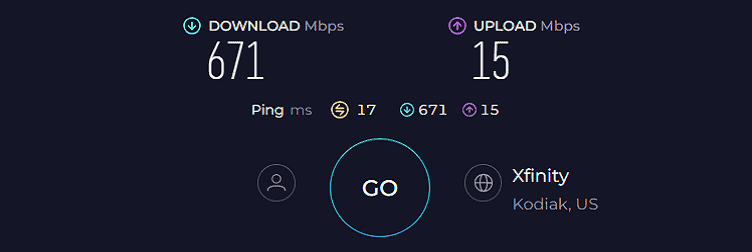
In my long-range speed test, the iPhone 13 kept two walls away (40 feet) registered respective speeds of 421 Mbps and 23 Mbps.
Judging by the numbers, anyone using RT-AX5400 would have a great time. Additionally, it entails a QoS tech that lets you prioritize any high-bandwidth task like gaming or streaming to achieve the highest performance.
WiFi Coverage & Devices Capacity
The RT-AX5400 boasts four antennas and a stipulated range of 2,500 Sq Ft, superseding my previous two recommendations. In my tests, the performance was great, with signals travelling up to a 2,250 Sq Ft area in a breeze.
And my WiFi analyzer app displays a decent spread of signals, even in the nooks of my test lab. If you have a space much larger than that, utilize its AiMesh tech to pair another Asus router/extender and create a mesh-like network throughout.
The MU-MIMO tech helps connect over 30-50 devices simultaneously without any performance issues.
Conclusion
The RT-AX5400 packs a functional VPN, making it an ideal choice for homes. Its AsusWRT comes with many great customization and features. Besides, its Aiprotection is amongst the best in the market for enhanced network security.
Pros
- Decent throughput capacity
- Reasonable price
- Multiple customization options
- Strong WiFi coverage
- Fast Wi-Fi 6 performance
- Easy to install
Cons
- Middling device-handling capacity
5. Best with Armor Security: Netgear RAX54S
Netgear Nighthawk RAX54S shows that high-speed internet can be used safely by pairing hardware and software with best-in-class network security tools.
The dual-band Wi-Fi 6 and four beamforming antennas suit high-end media consumers, online gamers, and others.
Why is it a suitable choice?
Right out of the box, RAX54S entails VPN support on MAC, PC, and the OpenVPN Connect app on Android and iOS to remotely and securely access the internet from your devices.
Besides, it offers a one-year free trial for Netgear Armor 2.0, which comes with a much more advanced Bitdefender VPN. Unlike regular OneVPN, it encrypts your internet connection rather than hiding your IP address to keep your online activities private, even when you’re on unsecured public networks.
Netgear Armor provides an additional layer of security to keep unwanted elements away from the network, block malicious websites, and let you browse in peace. Besides, its basic features like WPA3, access control, and guest network work to keep your network data and user credentials safe.
Speeds & Performance
The RAX54S has a dual-band Wi-Fi 6 setup with a maximum throughput capacity of 5400 Mbps. And the band-wise speeds max out at:
| 5 GHz: 4804 Mbps | 2.4 GHz: 574 Mbps |
Pairing a Gigabit Internet plan seems like a smart choice. And with a VPN turned on, the results were above average.
At 20 feet, the test registered a data flow of 897 Mbps for downloads and 32 Mbps for uploads. The bandwidth fell off when I moved at a distance of 40 feet.
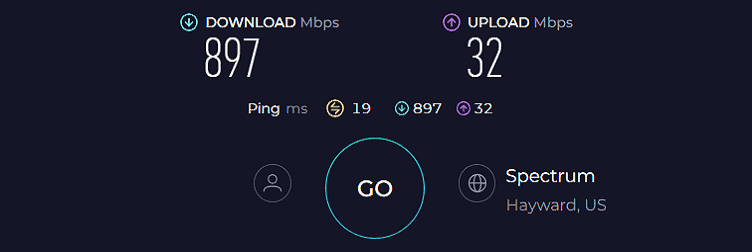
At this point, the respective download and upload throughput dropped to 671 Mbps and 26 Mbps. This makes it a viable choice for TV streaming, video calling, and more.
WiFi Coverage & Devices Capacity
Nighthawk RAX54S, with its four-antenna setup, manages to transmit signals to a 2,100 Sq Ft area easily. Combined with the beamforming tech, the signs in the nooks were stable and reliable.
Its abilities range from MU-MIMO to serve multiple devices to full 1024QAM operations for maintaining a high speed throughout. With these in hand, I could breeze to 42 smart devices at once.
Conclusion
Overall, the Nighthawk RAX54S is a great midranger, providing diverse valuable features, including fast speeds, Armor security, decent coverage, and reliability.
Pros
- Advanced Bitdefender VPN
- Great close-up performance
- Decent WiFi range
- 1-Year free Netgear Armor
- Reasonable price
Cons
- Dual-band support
6. Best for Third-Party Firmware: Linksys WRT3200ACM
- Fast wireless router provides Wi-Fi coverage for your home (works with existing modem)
- Open source firmware offers advanced customization; Certified operating systems: MacOS (10.X or higher), Windows 7, Windows 8.1 (Works with Windows 10)
- Tri stream 160 technology doubles bandwidth from 80 MHz to 160 MHz
- Enjoy 4K HD streaming, gaming and more in high quality without buffering
- Dual band Wi-Fi speeds up to 2.6 Gbps (2.4 GHz / 600 Mbps) plus (5 GHz / 2600 Mbps). Operating temperature: 32 to 104 F (0 to 40 C)
If you're a power user unsatisfied with the router's stock firmware and need complete control over the network, Linksys WRT3200ACM is worth considering.
Aside from support for OpenWRT, DD-WRT, and Tomato, its wireless capabilities with decent speed and range easily take over your internet-based tasks.
Why is it a suitable choice?
Unlike my top picks, it doesn’t come with any pre-installed VPN. But courtesy of its open firmware support, flashing one doesn’t get any simpler.
I got ExpressVPN installed. If you want the same, just download the firmware, and follow the instructions to install and get it up and running.
Aside from traditional remote browsing and network encryption, you get “smart location” settings, which automatically detect and connect to the nearest and best server from the list.
There’s this “manage devices” tab where you can manage the way the connected devices are using the internet. For example, you can unblock Netflix from your smartphones or TVs using Mediastreamer.
Other than that, the in-built security features include guest access, WPA2, and auto-firmware updates for basic security of network datasets.
Speeds & Performance
The WRT3200ACM, despite its rather old Wi-Fi 5 standard, comes at a decent total speed of 3200 Mbps, where the speed on each band is as follows:
| 5 GHz: 2600 Mbps | 2.4 GHz: 600 Mbps |
I paired the router with the Xfinity Gigabit plan. Nearby (20 feet), WRT3200ACM attained around 861 Mbps for downloads and 31 Mbps for uploads.
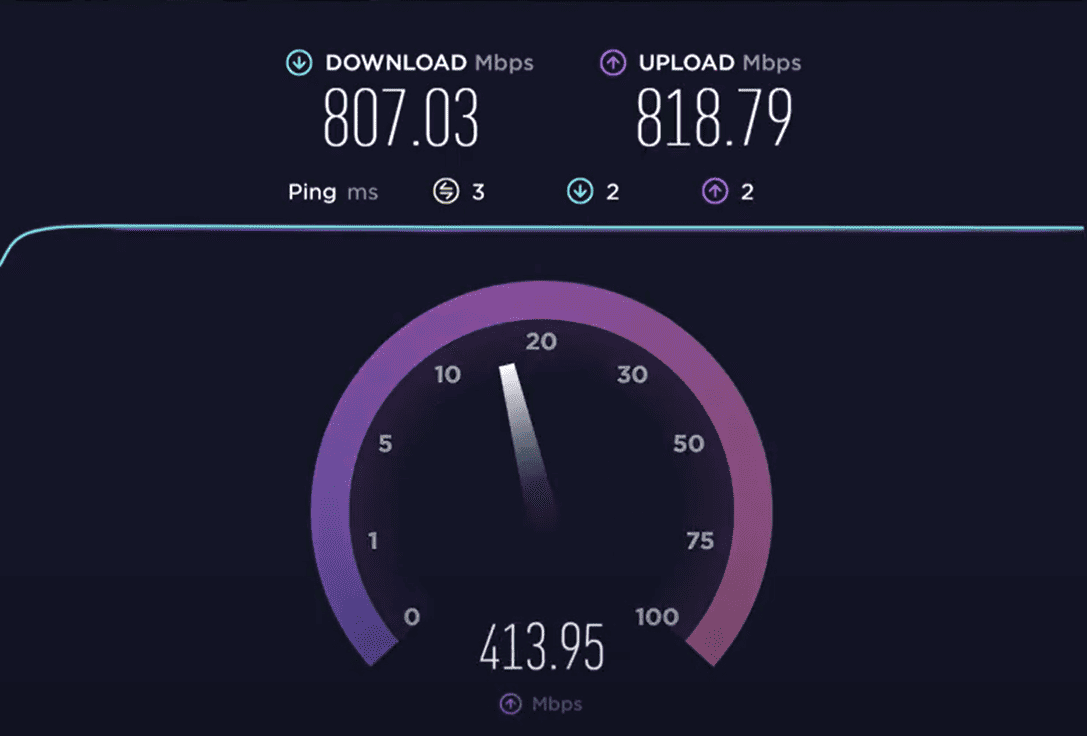
Meanwhile, at 40 feet, the speeds dropped to 576 Mbps and 25 Mbps, respectively.
Those are some decent numbers, considering the speeds drop when using the VPN server. I streamed UHD videos on my OnePlus smart TV at about 19.3% frame rate, with music and video calls running in the background.
WiFi Coverage & Devices Capacity
Considering Linksys's stipulated range of 3,000 Sq Ft, I expect a rundown of strong signals in any two to 3-bedroom apartment. And unsurprisingly, the router managed to encase every corner of my entire 2,500 Sq Ft Nashville test lab.
I could stream online content on my smartphone, even in the nooks. Barring its above-average range, it claims to connect to up to 30 devices simultaneously.
And the test results weren’t very far, with the MU-MIMO tech making up to 25 high-speed connections possible.
Conclusion
Overall, Linksys WRT3200ACM is an excellent option for open firmware support, providing the versatility to install any VPN you like. And not to mention its excellent wireless capabilities make way for faster streaming and gaming.
But despite the simple installation process, it can be difficult to comprehend for users, especially beginners. This is why it's ranked sixth. Read the full review.
Pros
- Open-source firmware support
- Multiple VPN choices
- Decent speeds
- Good WiFi range
- Tri-Stream Wireless Signal
Cons
- Wi-Fi 5 standard
7. Cheap Yet Good: Netgear R6700AXS
- Coverage up to 1,500 sq. ft. for 20+ devices
- Fast AX1800 Gigabit speed with WiFi 6 technology for uninterrupted streaming, HD video gaming, and web conferencing
- Connects to your existing cable modem and replaces your WiFi router. Compatible with any internet service provider up to 1Gbps including cable, satellite, fiber, and DSL
- Plug in computers, game consoles, streaming players, and more with 4 x 1G Ethernet ports
- NETGEAR Armor protects your family's WiFi with an automatic shield of security across your connected devices with a 1-year subscription (99.99 value) included
The final recommendation on my list is an affordable yet reliable option. Netgear R6700AXS brings along a dual-band Wi-Fi 6, decent throughput capacity, VPN features, and technologies like MU-MIMO and beamforming+ to bolster its wireless connectivity.
Why is it a suitable choice?
It brings a VPN with basic abilities to browse anonymously and securely right out of the box. Besides, the router is said to be safe for the installation of third-party options like NordVPN, ExpressVPN, and more.
Setting it up is also simple, as with Linksys WRT3200ACM: download the software and install it, and that’s it. Get ready to explore advanced features.
Aside from that, the R6700AXS bestows basic yet reliable security features like DDoS protection, DDoS protection, and guest network. It secures your network data from intrusion and malicious agents.
Speeds & Performance
The R6700AXS isn’t the fastest router I have tested so far, and has a maximum throughput capacity of 1800 Mbps. The respective speed on each band is as follows:
| 5 GHz: 1300 Mbps | 2.4 GHz: 500 Mbps |
The overall performance was decent with the Xfinity 800 Mbps plan, using iPhone 13 as my testing device and keeping the VPN active.
Specifically, at about 15 feet, the respective downloads and uploads were recorded at 410 Mbps and 29 Mbps, respectively.
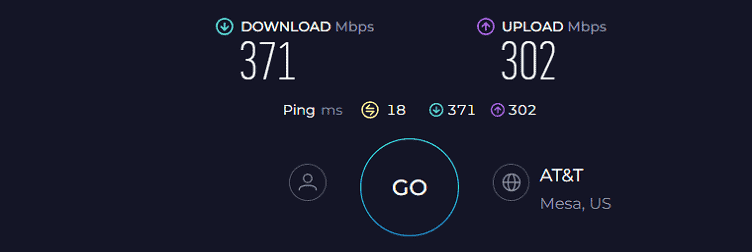
Meanwhile, at 30 feet, the respective speeds dropped to 361 Mbps and 19 Mbps.
Considering the numbers, the device performed decently. One thing worth mentioning here is its Smart Connect feature. It combines both bands into a single network and automatically steers the device between them as needed.
WiFi Coverage & Devices Capacity
Range-wise, the R6700AXS’s performance was below par despite its beamforming+ integrated three-antenna support. But not even a single corner of my client’s 1,300 Sq Ft area was void of signals, and the available signal strength in the corner ran UHD streams like a breeze.
Thanks to its MU-MIMO support, the device managed to handle up to 23 devices at once.
Conclusion
Netgear R6700AXS is a cheap yet good router for VPN use. The installed firmware stays stable, and it manages strong signals in every part of your mid to small house. But lesser speeds and range than my previous recommendations have pushed it down.
Pros
- Wi-Fi 6 standard
- 1-year free Netgear Armor
- Stable network performance
- Decent speed & range
- Affordable price
Cons
- No USB port
- Middling WiFi range
Frequently Asked Questions
It’s worth noting that many routers don’t support a VPN connection, and if this is your priority, scrutinize the spec sheet to determine its compatibility.
It is quite simple, provided the router has built-in support for that. Once you confirm that, go to the official website (NordVPN, ExpressVPN, or others), download the firmware, and install it. It hardly takes a few minutes to set up.
If compatible, yes. Some of the best-rated VPNs offer multiple features like ad blocking, multi-device support, security u0026 privacy, geo-restrictions bypassing, and more. But flashing it on a device that doesn’t support VPN can disrupt its functionality and, worse, entirely stop working. So, ensure its compatibility.
👉 Related reading: Pie Adblock: Get Paid To Block Ads
A few mesh systems are compatible with VPN, but you might not get all the features in traditional routers.
Verdict
VPN comes out as essential to keep yourself safe online, but you need a decent router to support that. If you weren’t able to choose from my curated list, here are some of the best options:
- If you need one with a built-in VPN and don’t want to go through the hassle of installing it, Synology RT6600AX is the best you can get.
- If you are a techie and don’t mind installing it manually, get Linksys WRT3200ACM. Its wireless capabilities are also decent.
- Finally, if you need a cheap yet dependable device, go for Netgear R6700AXS.









